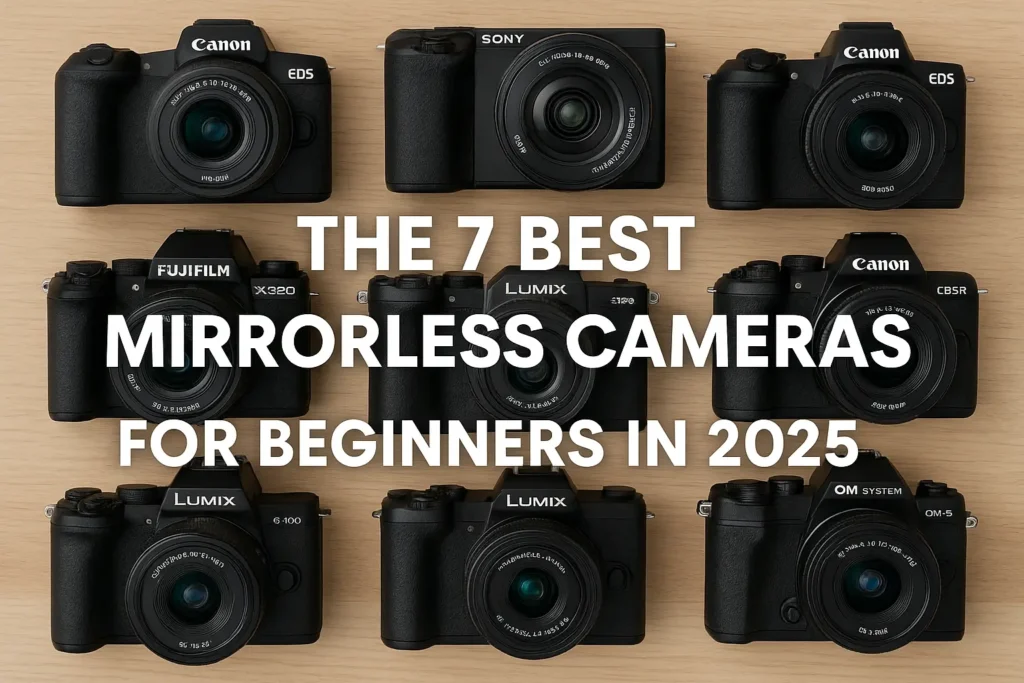Choosing your first camera can be overwhelming. That’s why we’ve rounded up the best mirrorless cameras for beginners in 2025, covering Canon, Sony, Nikon, Fujifilm, Panasonic, and OM System. Each offers great image quality, intuitive controls, and lens options that grow with your skills.
Quick Comparison (what’s “best” for what)
| Camera | Why it’s great | Sensor | In-body IS | Video headline | Best for |
|---|---|---|---|---|---|
| Canon EOS R50 | Super friendly menus & AF; 6K oversampled 4K30 | 24MP APS-C | — | 4K30 (no crop) | First mirrorless for photos + reels |
| Sony ZV-E10 II | Creator-first design, excellent lens options | 26MP APS-C | — | 4K60 | Vlogging & short-form |
| Nikon Z30 | Compact, great value, simple workflow | 20.9MP APS-C | — | 4K30 | Travel & everyday |
| Fujifilm X-S20 | Strong battery, IBIS, classic color science | 26MP APS-C | Yes | 6.2K open-gate/4K60 | Hybrids who want “one body to do it all” |
| Panasonic Lumix G100D | Tiny body, creator tools, spatial audio | 20MP m43 | — (hybrid IS) | 4K30 | Beginners on a budget & YouTube |
| OM System OM-5 | Weather-sealed, powerful computational modes | 20MP m43 | Yes | 4K30 | Hiking/travel, hand-held stills |
| Canon EOS R100 | Cheapest way into Canon RF mount | 24MP APS-C | — | 1080/4K24 (basic) | “Just photos” starters on a tight budget |
Specs summarized from official pages linked in each section. See details there for limits like record durations and crops.
How to pick (fast!)
-
If you’ll shoot mostly video: Sony ZV-E10 II or Panasonic G100D.
-
If you want in-body stabilization (steadier hand-held): Fujifilm X-S20 or OM System OM-5.
-
If you want the simplest stills camera with great AF: Canon R50; for the lowest price tag, R100.
-
If you want the comfiest grip & value two-lens kits: Nikon Z30.
The 7 Best Mirrorless Cameras for Beginners in 2025 (Full Comparison)
1) Canon EOS R50 — best all-round starter for photos + 4K
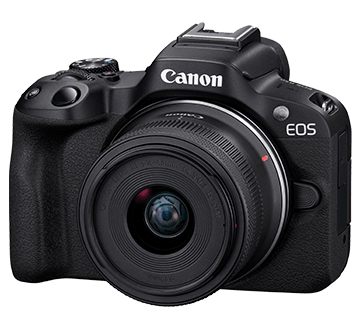
Why it’s great: Canon’s menus are friendly, autofocus is sticky, and 6K oversampling gives crisp 4K30. Perfect “first serious camera” for family, travel, and casual video.
Key specs (high-level): 24.2MP APS-C, Dual Pixel CMOS AF II, 6K-oversampled 4K30, compact body.
Recommended starter lenses
-
RF-S 18–45mm f/4.5–6.3 IS STM (kit walk-around) — tiny, stabilized, great for daylight. Canon U.S.A.
-
RF-S 55–210mm f/5–7.1 IS STM (tele for kids’ sports & wildlife). Canon U.S.A.
-
RF 50mm f/1.8 STM (cheap “nifty fifty” for portraits & low light; works on APS-C). Canon U.S.A.
Consider if: you want the easiest path to great-looking photos/video right away.
Skip if: you need IBIS or heavy 4K60 video use.
2) Sony ZV-E10 II — best for creators & vloggers
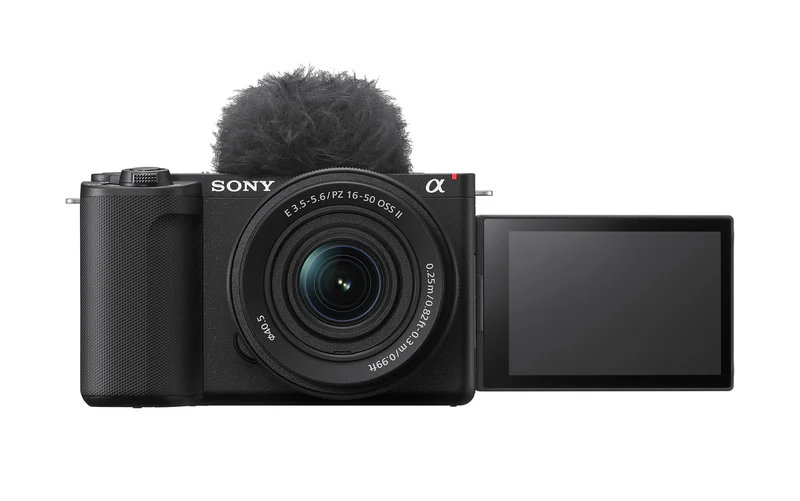
Why it’s great: Built for creators: side-flip screen, face/eye AF, high-quality 4K60, and the deepest affordable APS-C lens pool (Sony + Sigma/Tamron).
Key specs: ~26MP APS-C, 4K60, compact body with creator-focused UX.
Recommended starter lenses
-
Sony E 11mm f/1.8 (ultra-wide prime for hand-held vlogging). Sony Electronics
-
Sigma 18–50mm f/2.8 DC DN (lightweight constant-f/2.8 everyday zoom). Sigma Global
Consider if: video is your priority with occasional photos.
Skip if: you need IBIS in the body.
3) Nikon Z30 — best compact value for travel
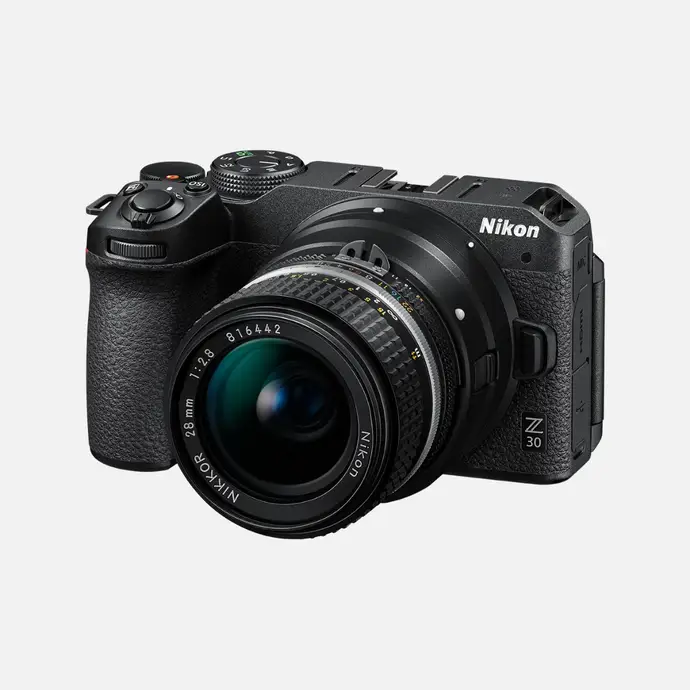
Why it’s great: Clean handling, nice color, very compact; great value two-lens kits (16-50 + 50-250).
Key specs: 20.9MP APS-C (DX) sensor, 4K30, reliable face/eye AF.
Recommended starter lenses
-
NIKKOR Z DX 16–50mm f/3.5–6.3 VR (sharp, stabilized, tiny). Nikon
-
NIKKOR Z DX 50–250mm f/4.5–6.3 VR (light telephoto for sports/wildlife). nikonusa.com
-
NIKKOR Z DX 24mm f/1.7 (small, bright walk-around prime). nikonusa.com
Consider if: you want a compact kit for trips and everyday moments.
Skip if: you need 4K60 or IBIS.
4) Fujifilm X-S20 — best “one body does it all”
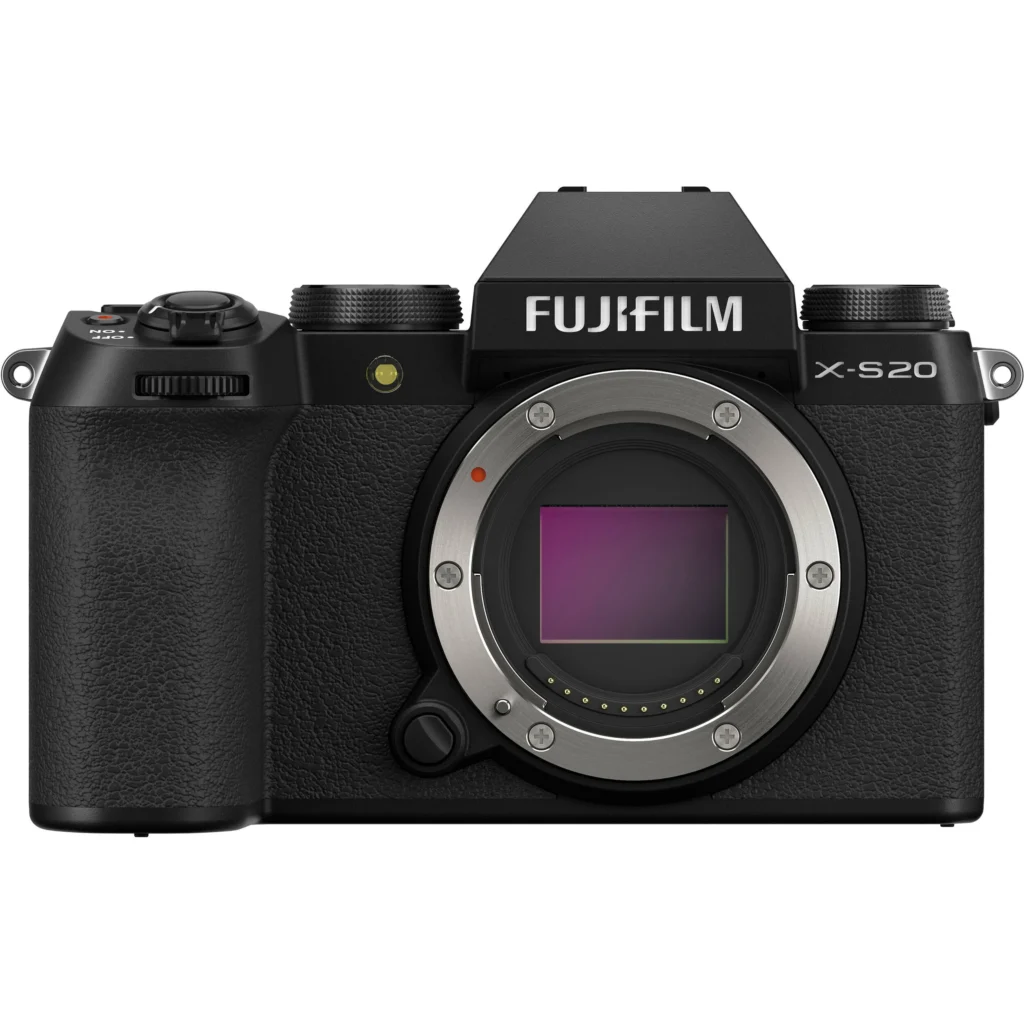
Why it’s great: Excellent stills, strong video, in-body stabilization, big battery, and Fuji’s film simulations for lovely color straight out of camera. A superb hybrid that can carry you from beginner to enthusiast. DPReview
Key specs: 26.1MP X-Trans APS-C, IBIS, up to 6.2K open-gate/4K60, subject-detect AF. Fujifilm DSC+1
Recommended starter lenses
-
XF 18–55mm f/2.8–4 R LM OIS (the best “kit” zoom on any system). Fujifilm X+2Fujifilm X+2
-
XF 35mm f/2 R WR (small, weather-resistant portrait/streets). Fujifilm X+1
Consider if: you want IBIS, premium feel, and room to grow.
Skip if: ultra-budget is the main concern.
5) Panasonic Lumix G100D — best ultra-compact creator starter
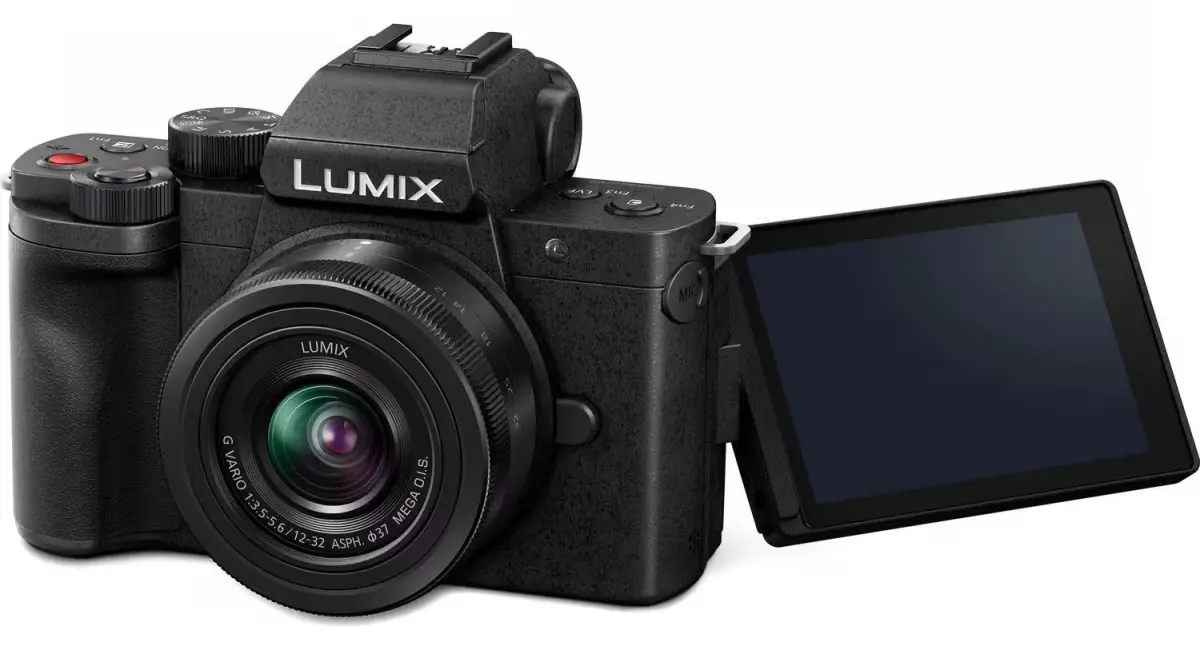
Why it’s great: Very small, creator-friendly tools (frame markers, REC border), spatial OZO audio, and simple 4K30. Great for first-time YouTubers/TikTokers. Shop Panasonic USA+1
Key specs: 20MP Micro Four Thirds, 4K30, flip screen, hybrid stabilization. Shop Panasonic USA
Recommended starter lenses (Micro Four Thirds has tons of affordable glass)
-
Lumix G 12–60mm f/3.5–5.6 (versatile travel zoom). Shop Panasonic USA+2mirrorlessons.com+2
-
Lumix G 25mm f/1.7 (cheap, fast “nifty fifty” equivalent). Shop Panasonic USA+1
Consider if: you want the smallest interchangeable-lens setup with creator features.
Skip if: you need strong low-light/blur control without fast lenses (no IBIS).
6) OM System OM-5 — best for outdoors & hand-held stills
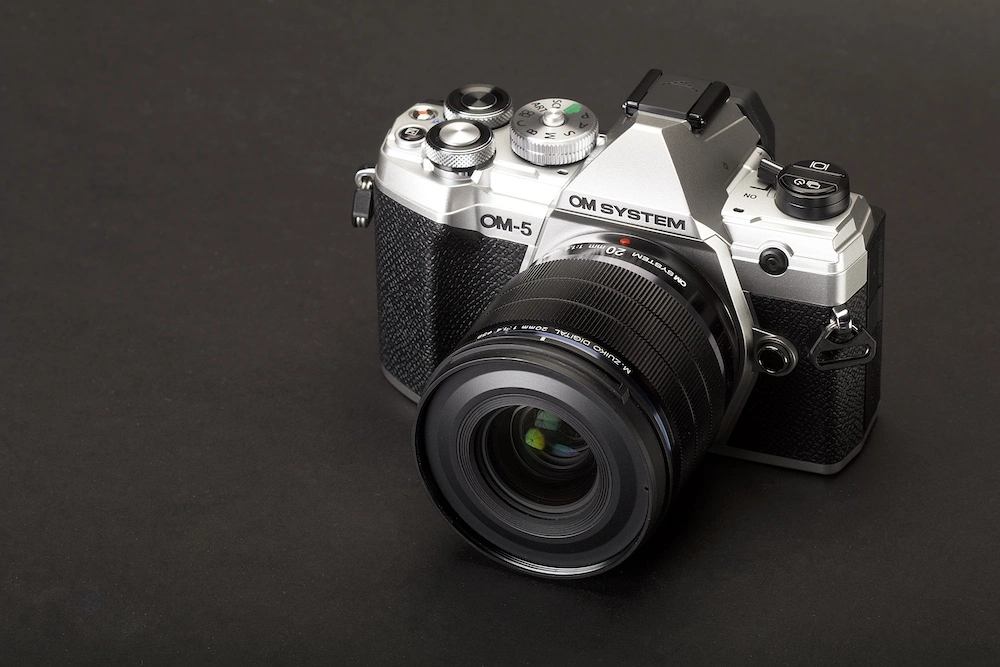
Why it’s great: Weather-sealed body, excellent 5-axis IBIS, clever computational modes (Handheld Hi-Res, Live ND). Brilliant for hikes and travel when you’d prefer to leave the tripod at home. OM SYSTEM+1
Key specs: 20.4MP Micro Four Thirds, 5-axis IBIS, rugged body, 4K30. OM SYSTEM
Recommended starter lenses
-
M.Zuiko 12–45mm f/4 PRO (sharp, weather-sealed everyday zoom). OM SYSTEM+2OM SYSTEM+2
-
M.Zuiko 45mm f/1.8 (tiny portrait lens; lovely background blur). OM SYSTEM
Consider if: you’ll shoot a lot outdoors and want stabilization + weather sealing.
Skip if: you need 4K60 or the largest sensor look.
7) Canon EOS R100 — best rock-bottom price entry
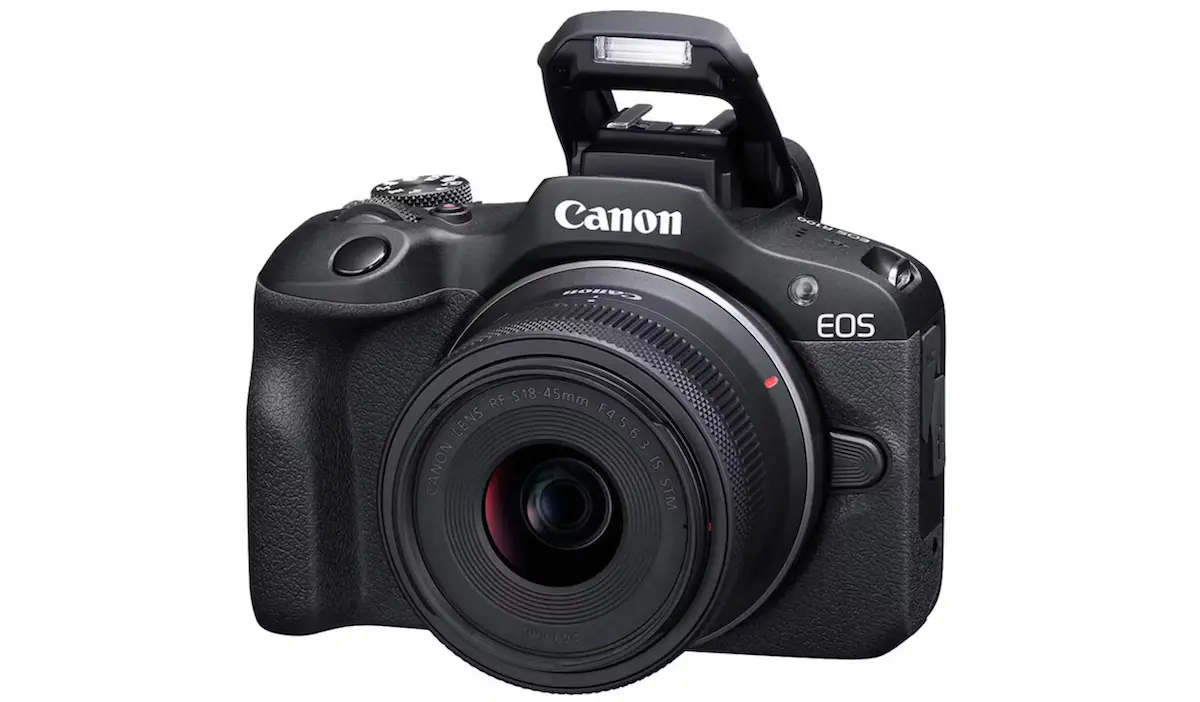
Why it’s great: The cheapest way into Canon’s modern RF mount. Great image quality for photos, basic video. Perfect for someone who wants better than a phone without learning curves or cost. Canon U.S.A.
Key specs: 24.1MP APS-C, compact body, simple controls; entry-level 4K24. Canon Cyprus
Recommended starter lenses
-
RF-S 18–45mm IS STM (small everyday zoom). B&H Photo Video
-
RF 50mm f/1.8 STM (budget prime for portraits & low light). Canon U.S.A.
Consider if: you want the lowest price and will mostly shoot photos.
Skip if: you need advanced video features or IBIS.
Which of the Best Mirrorless Cameras for Beginners in 2025 Is Right for You?
-
Just getting started, want the easiest success: Canon R50.
-
Making videos of yourself or products: Sony ZV-E10 II (pair with the 11mm f/1.8) or Lumix G100D for lower cost.
-
You travel light and love value lens kits: Nikon Z30 with 16-50 + 50-250.
-
You want stabilization and a body you won’t outgrow: Fujifilm X-S20 (XF 18-55 + 35/2 is a killer pair) or OM-5 if ruggedness matters.
FAQs
APS-C vs Micro Four Thirds for beginners?
Both are great. APS-C offers a touch more shallow-depth-of-field and low-light potential (all else equal). Micro Four Thirds wins on lens size/weight and stabilization features per dollar (see OM-5, G100D sections). Camera picks and lenses above are what actually matter day-to-day.
Do I need IBIS?
Helpful, not mandatory. If your camera lacks IBIS, pick a stabilized zoom and a fast prime (f/1.7–f/2.8) to keep shutter speeds up—see each kit’s lens picks and official specs.
Final tip
If you can, handle the camera in person to see which grip and menus feel natural. Then buy the body with one good zoom and one fast prime; that combo will carry you through 90% of beginner-to-intermediate shooting.

